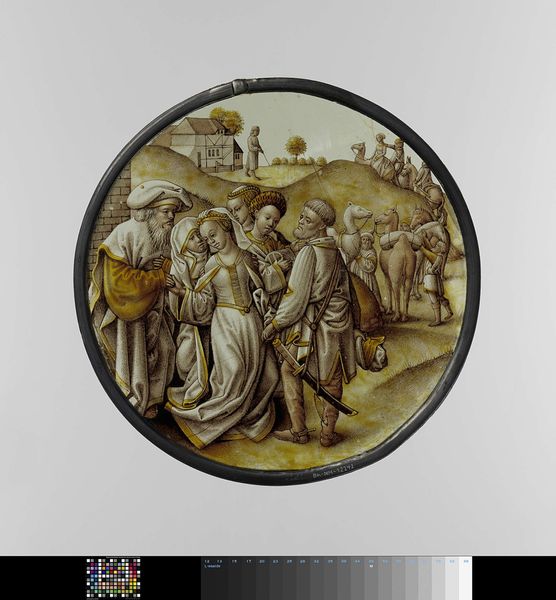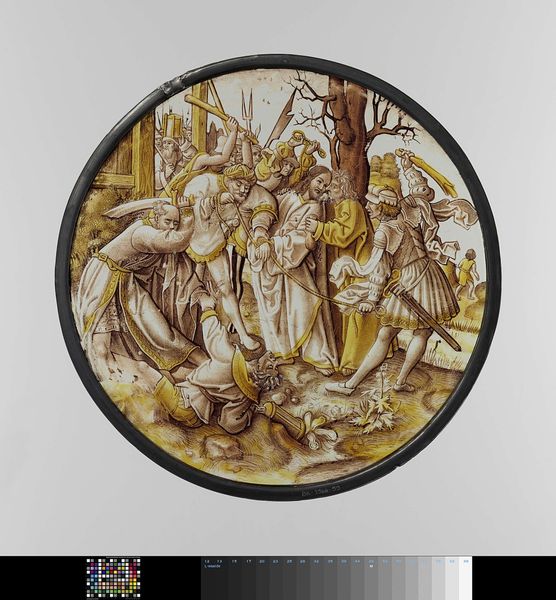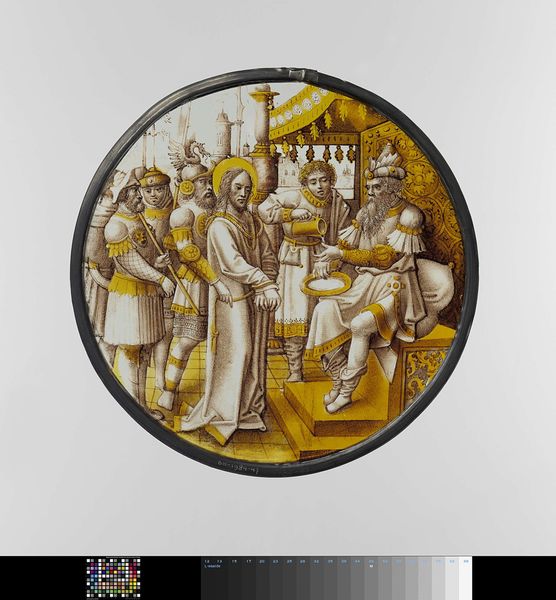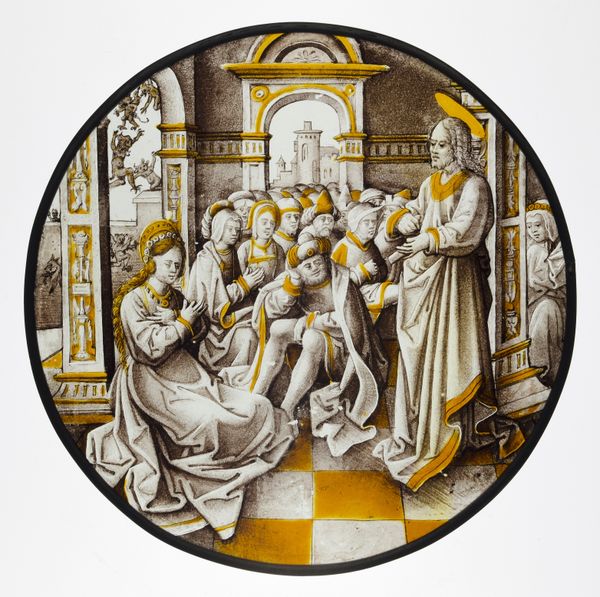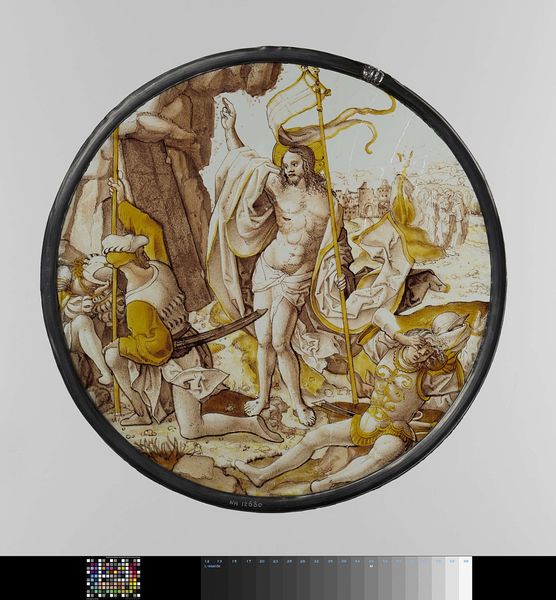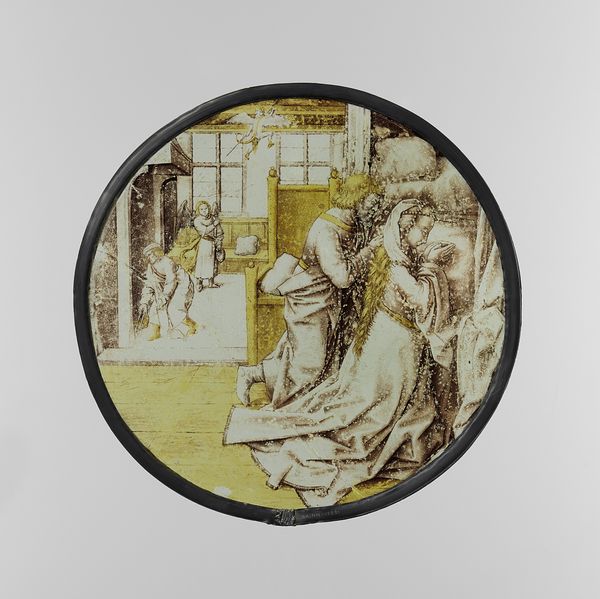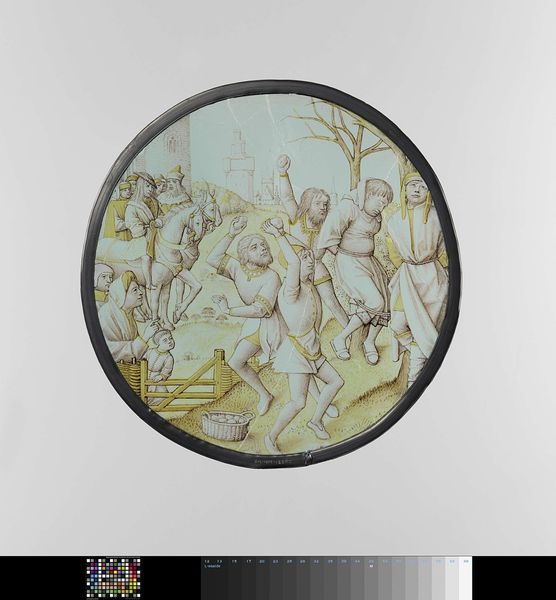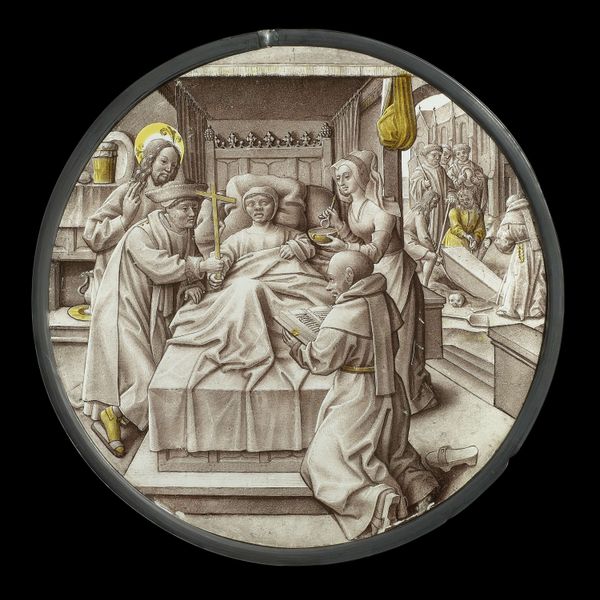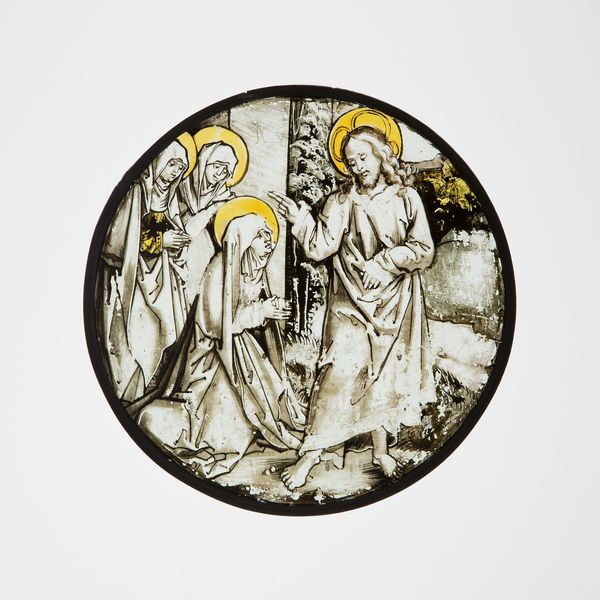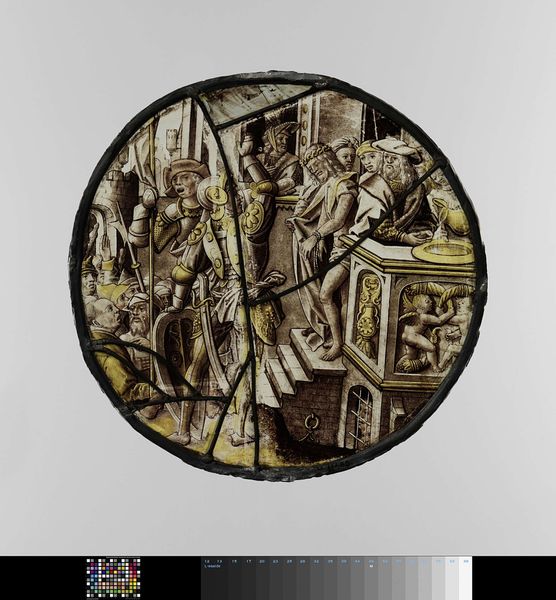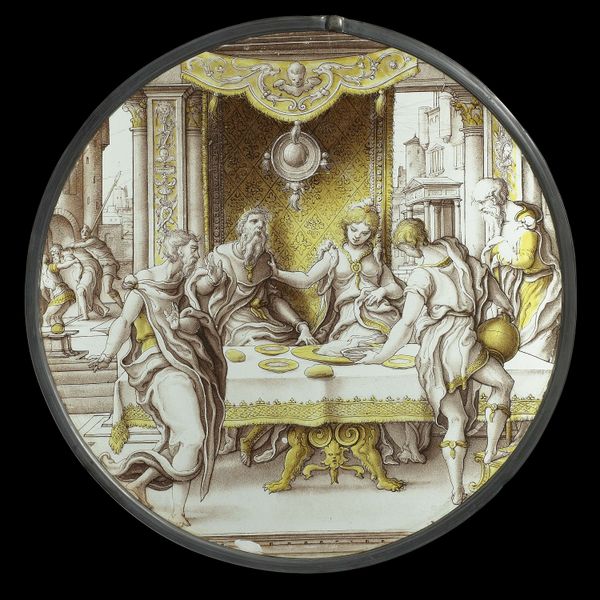
glass
#
medieval
#
narrative-art
#
sculpture
#
figuration
#
glass
#
history-painting
#
international-gothic
#
statue
Copyright: Rijks Museum: Open Domain
Editor: This beautiful roundel, "Abraham Blessing the Marriage of Isaac and Rebekah," made of glass sometime between 1480 and 1500, has such a dreamlike quality. What jumps out to you when you look at it? Curator: Well, beyond its immediate visual appeal, I see a potent commentary on power structures inherent in marriage during the late medieval period. Do you notice how the women are positioned relative to the men? Editor: They’re mostly behind the bride, Rebekah, almost supporting her. Abraham is front and center, presiding, with Isaac by his side. Curator: Exactly. The work reflects patriarchal norms and the transactional nature of marriage at the time. The blessing isn't just about divine approval, it’s about securing lineage and property rights, reinforcing existing social hierarchies. How might we interpret Rebekah's posture? Does she seem like she has agency? Editor: She looks… solemn. Perhaps resigned? Her head is bowed, but I’m not sure. It’s hard to tell what she's feeling. Curator: And isn’t that telling? The artwork, while seemingly celebrating a union, also silently speaks volumes about female subjugation. Remember, artistic depictions rarely exist in a vacuum; they actively shape and perpetuate societal views. Editor: I never considered how loaded a simple wedding scene could be. Now I'm wondering about other hidden messages! Curator: That's precisely why we study art history! It helps us unearth these embedded narratives and understand their continued influence. I hope to pass along what I have learned. Editor: I never thought I'd be deconstructing a wedding! Thanks for broadening my view, that really shed light on it.
Comments
No comments
Be the first to comment and join the conversation on the ultimate creative platform.
